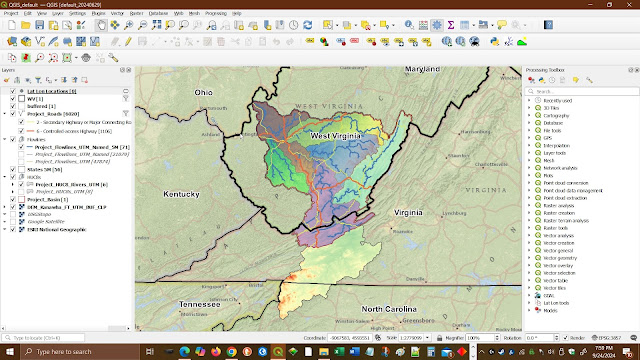### Scientific Roots
Originally, "quantum" comes from the Latin word for "amount" or "how much." In the early 20th century, it became a fundamental concept in physics with the development of quantum mechanics. This field of study revolutionized our understanding of atomic and subatomic processes, introducing ideas like quantized energy levels and wave-particle duality.
### Cultural Influence in the Early 2000s
By the early 2000s, "quantum" had permeated popular culture, often symbolizing cutting-edge technology and futuristic concepts. This was a time marked by rapid technological advancements and a growing fascination with the potential of science to transform everyday life. The term "quantum" was frequently used in media and entertainment to evoke a sense of mystery and advanced science, even if not always accurately.
### In QGIS
When Gary Sherman named QGIS in 2002, the choice of "Quantum" likely reflected this cultural zeitgeist. It suggested that the software was at the forefront of technology, leveraging the latest advancements to provide powerful tools for geospatial analysis. The name also hinted at the precision and complexity that users could expect from the software, aligning with the scientific connotations of the term.
### Broader Cultural Context
The integration of GRASS GIS (Geographic Resources Analysis Support System) into QGIS is a fascinating story that highlights the collaborative nature of open-source software development.
### History of GRASS GIS
GRASS GIS was originally developed by the U.S. Army Corps of Engineers in the early 1980s as a tool for land management and environmental planning. It quickly became one of the most powerful and versatile GIS applications, known for its extensive geospatial analysis capabilities. Over time, GRASS GIS evolved into an open-source project, maintained by a global community of developers and users.
### Integration with QGIS
The integration of GRASS GIS into QGIS began as a way to leverage the powerful analytical tools of GRASS within the more user-friendly interface of QGIS. This integration allows users to access GRASS functionalities directly from QGIS, combining the strengths of both platforms.
#### Key Features of the Integration:
1. **GRASS Plugin**: To use GRASS functionalities in QGIS, users need to load the GRASS plugin via the Plugin Manager. This plugin provides access to GRASS databases and tools, enabling users to manage and visualize GRASS raster and vector layers.
2. **GRASS Toolbox**: The GRASS Toolbox in QGIS offers over 400 modules for various types of geospatial analysis, including raster and vector manipulation, 3D rendering, and temporal data analysis.
3. **Data Management**: Users can import data into GRASS locations and mapsets directly from QGIS, making it easier to manage and analyze large datasets.
4. **Seamless Workflow**: The integration supports a seamless workflow, allowing users to perform complex analyses without switching between different software environments.
### Impact on the GIS Community
The integration of GRASS GIS into QGIS has significantly enhanced the capabilities of QGIS, making it a more powerful tool for geospatial professionals. It has also fostered a collaborative environment where developers from both communities can contribute to the continuous improvement of the software.


No comments:
Post a Comment